This morning, Stages Cycling announced a new crank-based power meter, StageONE, which will be available for $699US. The power meter includes both ANT+ and Bluetooth Low Energy (BTLE/BLE/Bluetooth Smart), allowing you to connect to any of the ANT+ power meter heads out on the market today, as well as all of the phone based Bluetooth Smart phone apps and devices coming down the line.
Back at Eurobike three weeks ago I had the change to sit down with the guys behind the power meter and gets a brief hands-on peek at the unit.
As you can see above, the unit is literally on the crank arm, specifically, the left crank (the riders left crank). This is different from most “crank based” power meters that typically measure closer to/around the spider of the right side of the crank.
From an implementation standpoint this is substantial because it doesn’t require a specific chaining setup, nor specific pedals or wheels. Meaning that you can move it from bike to bike as long as you have the same and/or compatible cranks.
Interestingly, this isn’t terribly different from the measurement point of the Pioneer power meter I wrote about at Eurobike. With the Pioneer, they are measuring across both crank arms (to gather individual left/right power), whereas the StageONE measures it in one location (thus total). The Pioneer though has a significantly more complex installation situation though, which mandates a person go through Pioneer’s training program to install it. I thought it was interesting that in StageONE’s official press material, they seemed to subtly call it out and poke at this “No wires, magnets, zip-ties or additional mounted hardware”. The magnet reference though is tied to the lack of magnet needed for cadence, which is commonplace in today’s crank based power meters.
The unit will however require specific crank types, which means that you have to either purchase a compatible crank, or already have a compatible crank. Below are the compatible cranks/arms, and the prices. Note there are two prices – one for just the power meter (if you already have said crank), and one for the full left/right crank kit (including power meter). The sealed extra pod that attaches to the crank arm adds 20g of weight to that of a normal crank.
Shimano Products:
Shimano Dura-Ace 9000, $949 power meter, $1,399 complete crank
Shimano Dura-Ace 7900, $899 power meter, $1,299 complete crank
Shimano Ultegra, $799 power meter, $1,099 complete crank
Shimano 105, $699 power meter, $899 complete crank
Shimano Dura-Ace Track, $899 power meter
Shimano XTR, $899 power meter, $1,299 complete crank
Shimano XT, $799 power meter, $1,099 complete crank
Shimano Saint, $899 (only available as a power meter)
Shimano DXR, $899 (only available as a power meter)
SRAM Products:
SRAM X9 GXP, $699 power meter, $899 complete crank (Compatible with X7, X9, X0, XX [166 Q model], and many Truvativ models]
SRAM X9 BB30, $699 power meter, $949 complete crank
SRAM Rival OCT GXP, $699 power meter, $899 complete crank
(Compatible with Apex, Rival, Force, Red, Truvativ Omnium (track), and many other Truvativ models)
Cannondale BB30 Products (all Cannondale pricing still TBD):
Cannondale Hollowgram SI SL (pre 2012, road/mtn power meter only)
Cannondale Hollowgram SI SL2 road
Cannondale Hollowgram SI SL2 mountain
Cannondale Hollowgram SI road
Cannondale Hollowgram SI mountain
In total, they are offering 14 specific models. Which, if you had a bit of time on your hands and wanted to lay them all out – would look like the below. First are the road bike variants:
Then the mountain bike variants:
Despite measuring on one side (left), the unit does correctly give you total power by taking the left power and applying an algorithm to determine total power. If you compare it to spider based power meters, that is measured at the spider, which takes into account force from both cranks. Note however that none of the left/right crank based power meters currently available on the market today however independently measure left/right power. They all estimate it. The only direct force power meter today on the market that separately measures left/right power is the Polar/Look pedal based power meter. There are crank based units coming down the line next year that will measure it independently (i.e. the ROTOR system).
The accuracy of the unit is advertised to be within +/-2%. The unit includes temperature compensation to protect against drift due to temperature. It also supports a standard zero offset done ahead of riding. They are not however at this time opening up the unit to do any form of static load test or manual calibration. Though, they left open the possibility for that to change.
Here’s a quick blip by them on the temperature compensation component:
“The StageONE power meter uses a thermistor to actively compensate for temperature changes during the use of the power meter. The StageONE uses factory calibration points to plot a linear power slope. A pre-ride zero reset serves as a starting point for the ride’s power calibration. The thermistor active temperature compensation will move that slope based on ongoing environmental temperature readings to maintain consistent power values as the ambient environmental temperature changes. Furthermore, we match the thermal properties of the StageONE power meter’s strain gage to the base crank, thus the crank and gage’s properties are affected similarly by external temperature.”
While the unit measures only on the left side, it uses a “mathematical algorithm” to determine power across the entire system. It remains to be seen how different the values from the StageONE compare to something further downstream in the system (i.e. a PowerTap at the hub). That’s one area I’m looking forward to testing. Once I have a unit, I’ll be able to provide concurrent power data accuracy tests from this, a PowerTap, and a CompuTrainer (three total streams). One would suppose down the road you could also add a pedal or cleat based power meter as well.
Included in some of the material I received this weekend was the below comparison between themselves and a competitor (crank-based). Of course, once a unit lands in my hands – I’ll be doing some detailed accuracy testing against other power meters.
As noted earlier, the unit does not require a magnet to obtain cadence, and instead includes an accelerometer to determine cadence.
The power meter is powered via a standard CR2032 battery, and gets about 200 hours of life on the single coin cell battery. This is the same battery used on just about every other ANT+ device out there today in the market and typically costs about $3-5 to replace.
The unit transmits both on Bluetooth Smart as well as ANT+. This is huge in that it’s the first power meter to do so and gives you complete choice and flexibility when it comes to head units.
The Stages Cycling team worked with Wahoo Fitness on the Bluetooth Smart components, to ensure that they appear identically to that these components report and display power in the same way as the Wahoo Fitness KICKR trainer, as well as the Kurt Kinetic inRIDE trainer accessory. All of these devices adhere to the nearly standardized Bluetooth Smart power meter device profile, as well as the long standardized ANT+ power meter device profile. This is an important distinction, compared to something like the Velocomputer Bluetooth Smart power meter, which is not following these standards and requires specific apps to be written for it.
With the standardized units, you can hook it up to any app that follows the published device standards.
The unit also supports wireless firmware updates, which has become commonplace in today’s cycling accessory market.
And finally, they’ll be introducing a power meter protection plan. This is now the second company I’ve seen to offer/advertise such a plan (after Power2Max announced them at Eurobike), which enables you effectively buy insurance against accidental damage protection. The prices are directly tied to whether the power meter component you bought was $899/$799/$699, with the corresponding cost for the protection plan at $135/$125/$105. In other words, $105 for two years of accidental protection against crashes/etc.
The units will start shipping in January 2013.
Once the Interbike convention show floor opens up on Wednesday morning I’ll be swinging by where they’ve invited me over to get on a bike and give it a shot in person. Look for this post to be updated with additional hands-on thoughts with it actually attached to a bike. In the meantime, here’s a massive gallery of photos they sent over (PR supplied). I’ll put together a different gallery once I get more hand-on time. The photos above with the watermark are ones I took at Eurobike.
Interbike 2012 Update:
I’ve gone through all of the questions and sat down with the Stages team and had them answer every last one. I think we got them all covered.
In addition, I took shots of everything else I could find in their booth and placed it in another gallery below for your browsing. Enjoy!
As always, if you have any questions, feel free to drop them below. Thanks for reading!
FOUND THIS POST USEFUL? SUPPORT THE SITE!
Hopefully, you found this post useful. The website is really a labor of love, so please consider becoming a DC RAINMAKER Supporter. This gets you an ad-free experience, and access to our (mostly) bi-monthly behind-the-scenes video series of “Shed Talkin’”.
Support DCRainMaker - Shop on Amazon
Otherwise, perhaps consider using the below link if shopping on Amazon. As an Amazon Associate, I earn from qualifying purchases. It doesn’t cost you anything extra, but your purchases help support this website a lot. It could simply be buying toilet paper, or this pizza oven we use and love.

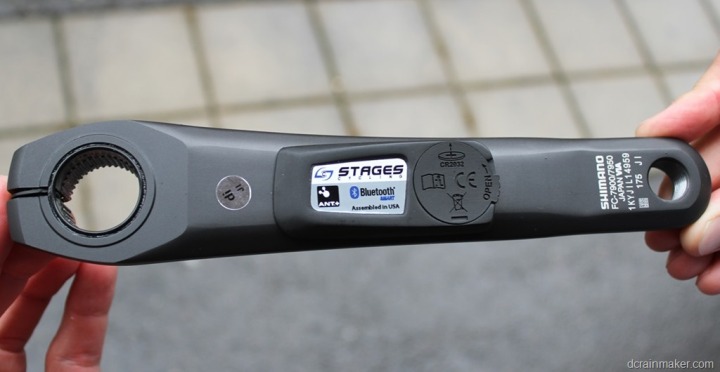
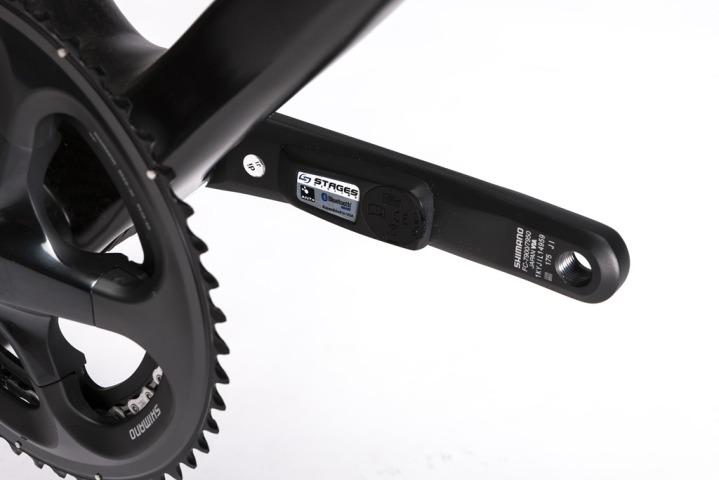

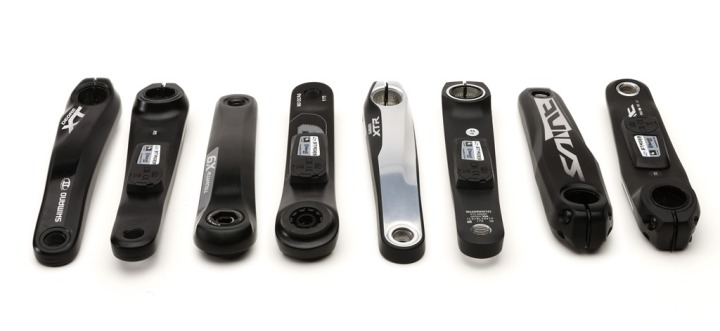
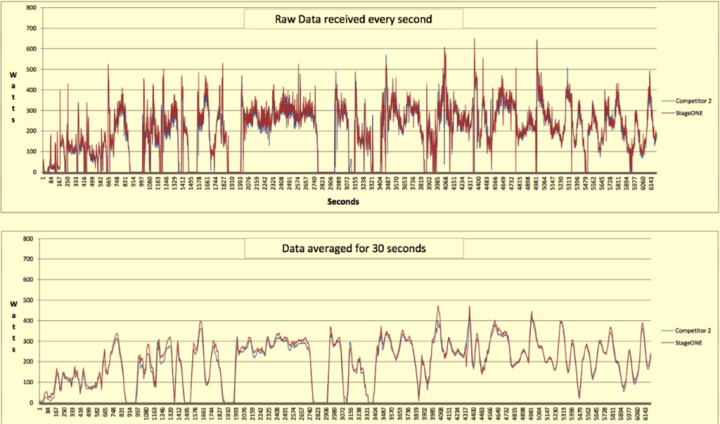

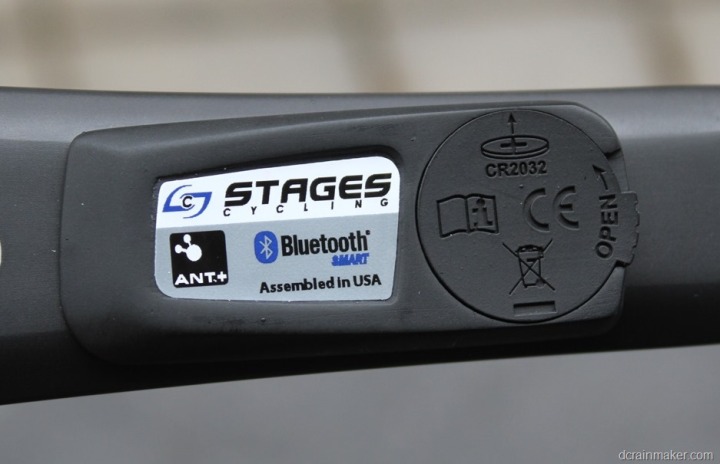
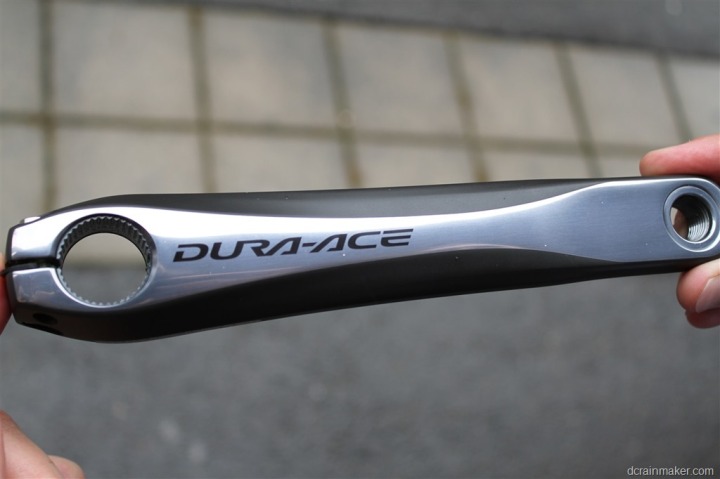
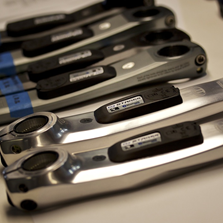
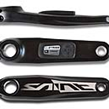
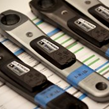
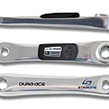
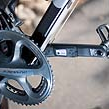

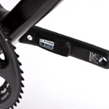
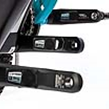
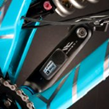
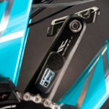
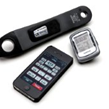
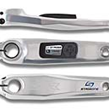
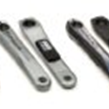
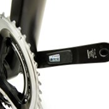
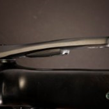
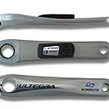
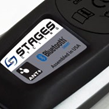
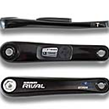
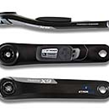
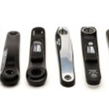
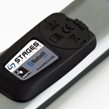
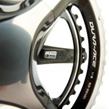
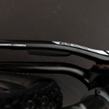
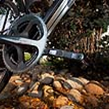
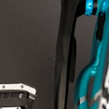
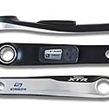
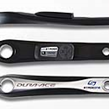
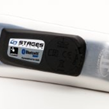
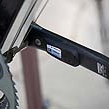
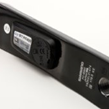
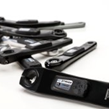
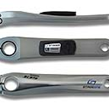
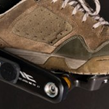
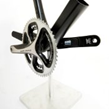
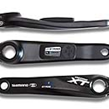
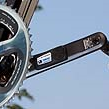
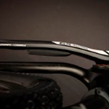
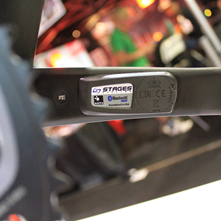
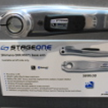
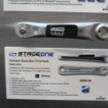
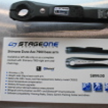
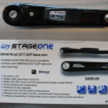
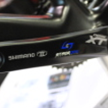

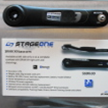
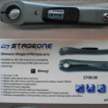


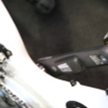
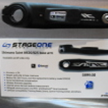
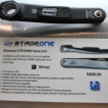
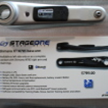





















Can you explain how this isn’t just giving left leg power?
It is out if the power transmission path for the right pedal, while each transmits through the spider, so I agree this is a one-sided measurement.
If you check out Durianrider on youtube (his ctfu cycle channel) he talks about them quite a bit. He says they’re very accurate compared to the other powertap device he compared it to over time. Sounds weird I know, but your legs are pretty well balanced.
I’m confused. I thought the strain gauges of a power meter were built into the crank itself. At first glance, it appears that you can just buy the “pod” and attach it to your existing crank if it is a compatible model. Is this the case? How exactly does that work?
They have to attach it at their factory so it is properly attached and calibrated. Wish it was just a pod you could change between bikes but it’s not. From youtube videos I’ve seen on the actual strain gauges, they’re not so easy to deal with and easy to damage so I’m sure that’s a big part of why they don’t want you to mess it up.
the visible attachment on the arm must be the sending unit and maybe the electronics. The torque sensors must be at the junction between the crank arm and the BB.
Could you ask them if a Campagnolo model is being developed as well?
Thanks to using accelerometers instead of the magnet, is it safe to assume that the unit will understand “backpedaling” and prevent high cadence data spikes like those seen when you quickly backpedal at just the “wrong” moment? Also, and this is more curiosity than anything, if you sat there pedaling backwards, is it going to report that as zero cadence or some number above zero? Pretty sure things would freak out if you sent a negative number, though that would be interesting, too.
Hi
How is it attached to the crank? Related to this, how easy (if it’s possible at all) is it to remove it and transfer to a crank on another bike?
Thanks.
They’re baked or glued on at their factory so that they’re calibrated correctly. You’d have to move the crank arm to the other bike so if you have different drivetrains, it sucks I know.
Tom,
I’m purely speculating here, but it seems the meters are designed for specific cranks, but assuming you are running the same type of crank on multiple bikes, it would simply be a matter or simply moving the left (non-drive side) crank arm from one bike to another, which is a pretty easy move.
Woah! Timely post. I was just getting ready to pull the trigger on a Quarq. Eagerly anticipating your updates in the coming days.
It appears it’s measuring left leg power, and extrapolating that measurement to calculate total power, but comparisons to PowerTap, for example, seem to be pretty close. Check out the Bike Radar article for a little more detail on this: link to bikeradar.com
So do I buy the crank arm that comes with the PM attached? I have some Shimano Ultegra 165mm cranks on my TT bike. Any idea if that length will be supported?
Isn’t this Ergomo all over again? Guess its ok if you’re L/R balance is pretty close to 50/50.
Would be so neat to be able to convert an old 53/39 into a PM though.
Do you know what sizes they will carry in the Shimano Dura-Ace 7900 – specifically the 180mm.
Thanks!
Tom
Can somebody explain why the price differs from Shimano 105 to Ultegra to Dura Ace? I could understand a price difference if you were buying the who crank, but for just the PM, the price should be the same. Obviously, they could use different materials and that could drive a price distinction, but that just seems silly in such a small device.
The crank arm for DA and Ultegra is more expensive. They aren’t just selling you a PM, they’re selling you a PM attached to the crank.
I don’t think this measurement location is comparable spider-based measurement as used in SRM and Quarq units. Its more than a issue of sensor placement on left vs. right, measurements taken at the spider measure total power from both legs.
Hey Ray,
This looks very promising. Can you find out when the Cannondale Hollowgram SI SL version will be released? I see it on the list but there are no pics of it in their marketing images. Looking forward to more info…cheers
When you buy the power meter only – you are buying the left crank + power meter (it is factory fitted).
When you buy the power meter + crankset – you are buying left and right cranks + PM (factory fitted).
It can’t be moved from crank to crank. The unit you see in the photos is a cover.
It’s not Ergomo all over again (Ergomo had issues over and above L/R balance) – it’s the same as SRM and Quarq which measure right-side only. This is just on the other side.
To be sure, Vector, Rotor and Panasonic will give both sides but they are more expensive.
Moving left side crank from bike to bike is probably quicker than moving a wheel.
Johnny, you’re ignorant of the workings of the SRM.
SRM measures strain on the chainring spider, not the right side. In point of fact you calibrate the slope using static weights on both the right and left crank arms. This unit measures just the left arm which for most people means you’re underreporting wattage given that most people are right leg dominant.
How much of the crank arm was milled out to accomodate the unit? I would be a bit worried if they had just taken a dremel to a DA crank arm. Shimano make it that thick, with that CSA for a reason!
Also not keen in the concept of it measuring just one side and extrapolating. But if they put one in each cranks arm . . . .
The strain sensors are microscopic wires on a backing material glued to the surface of the crank. No modification is made other than attaching the unit to the arm.
Johnny,
This isn’t quarq/SRM but just in the other side. When you push on your non drive side (left) pedal, the force travels down your crank arm, through your bb, along your crank spindle, though your spider, into your chain ring. When you push on your drive side (right) pedal, the force travels down the crank arm right into the spider and into your chainring. When measuring though the spider, your capturing any force between crank arm and chainring. It doesn’t matter if that force comes from the left crank, right crank, or a motor hidden in your seat tube turning your crank spindle.
The StageONE system is only measuring power traveling through the left crank arm. Quarq/SRM only measures power traveling through the spider.
anything about pricing and availability in Europe, specifically Germany?
As many before me has pointed out they have some explaining to do regarding the power measurement. I can’t think of anyway that this could measure the total power except for taking the left leg power output and double it. I guess we’ll get an update eventually :)
Good point folks. Not sure being called ignorant is particularly nice though :)
Johnny – welcome to the internet.
I won’t call you an idiot, but your statement “Moving left side crank from bike to bike is probably quicker than moving a wheel” is a bit questionable. Swapping a wheel doesn’t involve a torque wrench and a bearing preload adjustment.
Ray, more editorial comment from you needed. Let’s face it, ur the expert, many of us don’t have the time or inclination (or intelligence!) to evaluate. Many just rely on your expertise. You mentioned “downstream” of measurement locations. Where is “best?” Pedal? Arm? Spider? Does it matter?
@Johnny,
At first I thought your answer about getting the power meter and a left crank (or both cranks) was the right answer to my question. However, I reread Ray’s post and he states prices for powermeter “with cranks” or “without cranks.”
Ray, can you weigh in here…maybe I’m missing something. ARe you saying when you purchase the power meter only that you are getting a power meter already attached to a left crank arm? When you purchase a “complete crank” you are getting a left crank arm, right crank arm, chain rings, etc?
If what I described above is correct, I can understand a price differential between the various models.
Please ask about rotor cranks?
I reckon this will be a perfect piece of kit for power measurement on my TT bike?!? Looks like a simple but well though out system, hopefully their prior experience in the fitness arena has matured the algorithm for racers use! For now I’ll happily stick to my Quarq for road application.
So my question is//// why can’t this be made into a device that is glued/stuck on the actual crank arm on both side for true measurement? cant the device be made longer and thinner to accommodate for the electronics in it so it could be taped onto your existing crank arms. I don’t want to sell or take off my Campy carbon crank just to add a different crank system. I might as well buy a quark then. Looks like this has potential.
Looks very promising indeed. I do hope they will come with Campagnolo cranks also :(
Does it work with compact cranks?
Why is Campy always left out of power meter solutions???
Allow me to interpret the article for those of you that don’t understand:
1. They are selling the left crankarm which has an integrated powermeter.
2. You cannot remove the powermeter from the crankarm or buy just the powermeter. It is permanently part of the crank, even if it is just glued on. It is calibrated specifically for that crankarm.
3. No Campy or high level Sram due the fact they are made of carbon. This powermeter is only compatable with alu cranksets. Probably to due the possible interaction of the glue and carbon. (liability)
4. This powermeter only measure output from the left leg, since it is mounted on the left crankarm. Quark/SRAM measure output of both sides since the powermeter is mounted on the spider. Probably slightly less accurate due to interpolation, but cheaper.
5. Probably not going to see a Rotor version due to the machining on the back of the rotor cranks. Besides, who uses Rotor cranks anyway?
I applaud the effort (especially the price). If it is reasonably accurate, I’ll be picking one up!
Do they have a web site?
While I realize it’s been addressed in the “comments”, the following statement really needs to be revised: “Despite measuring on one side, the unit does correctly give you total power. This is fundamentally no different than all of the other crank-based power meters that have measured on the right crank.”
It IS fundamentally different from other currently-available power meters (excluding the PM formerly known as Ergomo), since it’s not measuring power from both legs. Stating unequivocally that it “does correctly give you accurate power” isn’t really true, either. It might; or, it might not. Power discrepancy between legs is not constant, and can vary not only between athletes but within an athlete. Fatigue, power levels and riding position all factor into the discrepancy, and using a single 30 second average to demonstrate “accuracy” doesn’t really isn’t that convincing.
It has the potential to be accurate and precise; it also has the potential to be neither… Given the price, which really isn’t that low, there are better options available.
Wow what a great idea for those who don’t want to spend 2 grand. I’m very intetested in buying this even if it is left leg power x2. It would still allow me to do power based workouts and measure improvement.
I’m not going to add anything to the conversation here apart from “want”
Hi All – thanks for all the comments.
Sorry for the delay in looping back, I’ve spent the whole day travelling towards Interbike.
I’ll answer what I can now, and then dive into more detail with the remainder of your questions Weds morning with the folks in person.
RE: Left Leg Power vs total power
The system measures left leg power, but uses a “mathematical algorithm” to determine total power. While the initial data is promosing, and Stages Cycling says they will start sharing some of the thousands of miles of comparative data to other PM systems – there’s obviously still some data to be seen here. No doubt that’ll come out in time.
I’ve tried to re-clarify some of that above to make it a bit more clear, and provide some additional background on left/right power in genreal. Hopefully that helps.
RE: Left Crank vs crank power meter vs full crank set
Just to clarify, you can’t buy just that little pod you see. What you are buying for $699 is the left crank arm with the pod attached to it (permanently). The pod has strain guages in it that measure the force you exert. When you’re buyin the full crank set, you’re buying both the left and right crankarms.
RE: Ergomo all over
To those that say it’s Ergomo, I suggest you try installing an Ergomo, and then using it with modern head units…nuff said.
RE: Just making a pod that can be glued on
I believe that product is called the Pioneer power meter (which is cemented on). In all seriousness, strain guages are fickle, and ensuring absolute correct installation across a broad number of crank arms would be tough.
RE: Website
They have this today: link to stagescycling.com – but will be launching their full site Tuesday.
RE: Editorial thoughts
I really believe this changes the game. However, it’s not quite as low as you think. The cheapest PowerTap’s aren’t much higher (and depending on sales, are the exact same price). The difference though is that for folks that have multiple wheelsets (common to have race and training), this allows them to choose whatever wheels they want without worrying about the hub in it.
There will undoubtedly be a market for higher end power meters. I think what will drive that market will be exactly how accurate this is with that total power calculation piece. If we find that the final version is within 1-2%, I suspect that many of the ‘spend $1,500 more’ agruements will fade away. But if we find that accuracy is closer to 4-6%, then those arguements will stay. Note that 4-6% number is something I just pulled out of thin air. The 1-2% is their advertised accuracy.
As far as best location goes, for the practical amongst us – the best really comes down to being the best overall solution. There are no doubt some that will spend whatever it takes to ensure absolute 100% certainty. For others, 98% is fine. For others, it’s more about not having to swap cranks, or wheels, or whatever. It sounds like there’s probably a good power meter comparison post coming up – explaining the options….
Thanks all – I’ll be gathering the rest of your technical/compatibility questions and getting them all answersed. Please do continue to drop questions here, as when I meet with them on Wednesday, I’ll simply be creating a list from the comments.
Rainmaker,
I suspect the “mathematical algorithm” to get total power is to multiply the (suitably time-averaged) left-leg power times 2. The accuracy of this “algorithm” depends on how close left leg power is to right leg power at the time of the measurement (averaging). The closeness of left leg power to right leg power will depend on the particular rider, and may also vary over time and depending on the conditions, type of riding, fatigue level, etc. for any given rider. If it is tested on a rider with very close left leg power to right leg power, it should produce the greatest accuracy. Perhaps you should test it in conjunction with a Polar power meter on a Dura Ace SRM crank with a rider with uneven left to right leg power, and then see how accurate it is.
This is just guessing and applying some common sense. If they are using accelerometer to measure cadence, they might have additional data points to estimate difference in left/right leg power.
Measuring cadence with classing magnet+sensor setup, you only know how much time it took to make one full turn. You get single data point each one full turn of pedals.
Measuring cadence with accelerometer, you can have multiple data points throughout the one full turn of pedals. If you push harder with your right leg then your left leg, sufficiently sensitive accelerometer can detect that it took just slightly less time to complete right-leg half of turn then left-leg half of turn. Time delta will be very small (especially at higher speeds when momentum is greater). If this time delta is measurable, it can be used to improve (to some degree) estimate of difference in left/right leg power.
Again, this is just an idea how you could get more precise estimate for right leg (instead of simply multiplying left leg data by two). I’ve no idea if they are actually doing something like this, doing something else, or doing this in combination with some other clever use of accelerometer raw data stream. Also, I’ve no idea how sensitive (i.e. expensive) accelerometer would be needed to actually measure this tiny time delta for two halves of the full turn, especially at higher speeds where I’d expect delta to be smaller due to rider/bike momentum.
One way or the other, I have a feeling that choice of using accelerometer to measure cadence instead of much cheaper and simpler classic magnet/sensor setup goes beyond making installation simpler.
Hi Ray,
I thought the BlueTooth Smart protocol was not determined as as far as power output? Do you know whether the BlueTooth Smart protocol is released already?
Cheers,
Tim
@Campyrecord10
Campag is left out probably because the market for their cranks is small in comparison to the big S.
Secondly carbon is anisotropic, so I would imagine there are additional challenges in measuring stress using strain gauges, particularly when angle of the surface layer in the crank varies from crank to crank.
@Hammertime,
I think the question we should be asking is whether L-R power balance changes during a ride.
My guess is that it’s pretty constant for most people. If it were not, people would have reported large variations from Ergomo to SRM readings over the course of a ride. Those with Look / SRAM Red PMs please comment on your experience.
Having an accelerometer inbuilt should allow system to compare the angular accelerations of the cranks when power is applied – L v R and estimate the relative powers applied, and so could be more sophisticated than just left x2, and account for changes over time/cadence etc?
Taking foot off the right pedal & just using left & observing power would be an interesting test.
Hi Rhonde-
RE: BTLE/BLE Power Profile
It’s basically in a final draft form. The folks driving it (Wahoo) are the same folks working on all of these projects (KICKR, StageONE, inRIDE) – and so you’re essentially seeing them keeping that ship together.
From what I hear, I don’t expect any changes to the draft before it’s finalized here shortly. If you’re looking to leverage that in an app, definitely reach out to the Wahoo folks and you can get a head start on it.
Alot of folks have Cervelo bikes with FSA Gossamer cranks. Can you inquire if they will be offering an option for these FSA Gossamer cranks? Lots-o-Cervelos out there.
Thanks. . .
We’ve been training indoors on FreeMotion Indoor Cycles that use this technology and it’s been a huge improvement over the wattage estimates found on other indoor trainers including the PROform TDF bike. I have a review if you are interested link to indoorcycleinstructor.com
It looks like the Rival arm fits only GXP BB. Can I use the X9 BB30 arm with road BB30 cranksets? Or are the Force/Red BB30 users left out in the cold with the Rotor/Campag guys?
While the device may be different from an Ergomo in terms of set-up, the Achilles heal of measuring power on one side is no different: it’s not that precise.
link to ncbi.nlm.nih.gov
link to saris.com
The device itself could be completely accurate, but the inherent flaw in measuring only one side is unavoidable, no matter how perfect the device happens to be. The paper on the Ergomo shows a variation of about 6%. Considering that some athletes only vary 6-8% in power output throughout the year, that’s simply not enough resolution to be useful, at least for the me.
Interestingly, one athlete I was coaching used an Ergomo and Powertap for a couple of weeks, and the variance was—6%. Keep in mind this is variance, not absolute error. The difference between left and right leg power output is not a constant. And, even if you happen to be one of those rare individuals who always has perfect distribution between left and right leg power, how would you actually know, without using another power meter to crosscheck?
The truth is, I was able to get similar variability out of an I-Bike, at half the price. If one wants a power estimator, this is a neat (albeit expensive) gadget. If one wants to accurately measure power, one needs something that measures the input of both legs. It really is that simple.
So if its taking a power measurement from only the left crank and using a algorithm to get total power, what would happen if you were doing one leg drills? Along the same lines what if a rider is right or left lege dominant and puts out more power from one leg than the other?
In addition to testing the StageONE, a PowerTap, and a CompuTrainer concurrently, would it also be possible to test another crank-based system such as a SRM or a Quark by using the right crank arm and web from SRM or Quark and the left crank arm from StageONE? This may be getting to the point of data overload, but it would be interesting to see the differences between two crank based power meters.
Yes, I’ll be able to put it on my Quarq Cinqo that I have as well as I have a GXP crank today on it.
Thus:
1) CompuTrainer (onhand)
2) PowerTap (onhand)
3) StageOne (Nov)
4) + PowerCal (for fun)
5) + Pedal based (none on hand currently)
Pardon the rookie question, but i have a Shimano Tiagra crankset, would any of these be compatible with my crank?
Confirmation of my guess as to the “mathematical algorithm”.
Per FAQ at link to stagescycling.com under “Since you are measuring the left side only, do you display just ones legs output?
“From our testing we have found that there is not a large variation from a riders left to right leg while riding. We make the assumption that your right and left leg’s are doing the same amount of work and double the left leg’s power. So the number that you see while training is for both legs.”
Ray that sounds like a great idea (the multiple test) for us rec cylicst. I was thinking of getting the powercal powerguesser…this would be great info
At last I see a light with those power meters… I mean the price :) I can’t wait to see a review from you about this power meter. The worst part is it won’t connect to my polar rs800cx….another reason for me to abandon polar and move to garmin.
Thanks all for the questions! I got answers to every last question about from the Stages team, and will be posting them all here in the next 8-12 hours. Tons of goodness coming!
I use a keo power and i reckon the left crank arm measurement will be an issue so far as accuracy is concerned if they just x 2. My L/R power is usually 48/52 though it will vary during a ride (high power sprint and climbing efforts are closer to 50/50). However in normal riding my 48% Left split would result in 96% of total power being reported if they just double the left measurement. So this is a 4% discrepancy to begin with….
Hi Anon-
One item to keep in mind is the accuracy of the PM. In other words, if the Polar is +/-2% – then in reality, that 48/52 may well be 46/54 or 50/50. You just don’t know. That’s where this whole thing gets tricky, and where some better long term independent comparison data gets interesting.
Hi All-
Here’s answers to all the questions that I believe weren’t answered yet.
(Part I)
RE: Offering Pod seperately (self-install)
There’s some pretty significant calibration and installation procedures that occur at the factor to ensure these are placed in exactly the right location and calibrated correctly for each specific crank arm. Unfortunately, any sort of self-install won’t be an option.
RE: Campy/ROTOR cranks
They are absolutely open to working with new cranks with them. They approach each prospective company as a partner, and then work with them in the same manner that other partners work with those companies. They noted that in the case of Campy, if it was up to them, they absolutely would. They also noted that they’re constantly looking to add new cranks (from our discussion on this, it sounded like finding and adding new cranks was a significant part of their work effort right now).
I asked how long it takes once a new crank is identified, before it can be offered with the power meter. He said that on average it takes 45-60 days, with the vast majority of that time allocated to the creation of the plastic portion of the pod for each individual crank. Stuff like 3D Printing, prototypes, samples, etc – but that it’s simply the plastic that is the long-lead item.
RE: Backpedaling (does the unit know it’s being backpedaled).
Yes, because of the accelleromteer, they know the X/Y access and thus know the direction of travel across those axises. Despite them knowing the negative torque value, they logically aren’t displaying/transmitting it.
RE: Arm lengths
Most lengths and most models. Goal is to carry all lengths in all ranges, as best they possibly can.
RE: 180’s on 7900
Yes, this specifically is supported.
RE: Cannondale timelines
Probably a month behind the others, thus roughly Feb timeframes. Waiting on final tooling to be done there. They expect the pricing within the next 30 days though – just finalizing some of the distribution aspects right now.
RE: Is there any milling out
No milling out at all. No change in integrity of the crank. They noted that it’s just as important to them, as it is to Shimano, SRAM, etc… In other words, none of these crank companies want anyone messing with the cranks.
RE: Pricing for other countries
Trying to get it as close to US pricing as possible, pre-duty/import taxes. Meeting with distributors daily on it (including meetings at Interbike), but they don’t have a date on pricing via those distributors to international countries. At this point, it’s largely in the hands of the distributors (which are mostly just told of it on Monday).
They did not however that you will be able buy direct at US rates + shipping overseas – they’ll absolutely do that. Shipping will be ‘reasonable’, they have no plane to make money/markup on shipping – they just want the product in your hands.
(Part II)
RE: Compact cranks
No issues there, or with differeing chainrings.
RE: “Math Algorithm” Details
They confirmed it is just straight x2. There is other data to be had from the accellerometer that may help down the line in this area, but no head units support the additional data metrics today that would be needed to refine some data being sent. However, it is something to look at in the future.
RE: Ability to place another unit on right side?
Nothing technically stopping you from doing it, and thus having legit left/right power. However, from there standpoint they don’t think it really makes sense for you as a consumer. At that price point you’re basically just talking the same ballpark as other $1,5000 power meters – and today they see that market as becoming pretty crowded. Their focus is on the budget option.
RE: Temp compensation
They calibrate the unit in the factory at different temperatures – thus they know ahead of time how it reacts to said temperatures. There isn’t a set interval for temp compensation (i.e. every 5 minutes), but rather it reacts to rate shifts in temperature. For example, while descending you change temp more quickly (min every 30s), versus steady-state on flats it may be longer (max every 10m). The primary object here is to conserve battery while maintaining accuracy.
RE: One-legged pedaling
Pretty close to zero if doing one-legged on right side. Depending however on the weight of the pedal, you could show some single-digit numbers merely because of the force you’d be generating as that pedal goes around the axil.
RE: FSA Gossamer
Same category as other cranks, however, stay tuned there on that one.
RE: GXP BB X9 BB30 arm with BB30
No, qfactor is different. But they say you could use the Canondale BB30.
RE: Shimano Tiagra Crankset
Potentially a Shimano 105 ($899), they’ll check on that one and see specifically what the options are.
Thanks all! And thanks to the Stages guys for sitting happily there answering a slew of questions.
Over the life of the crank, is it expected that fatigue of the alumium affect the power readings to the point that it is measurable?
Is this compatible with SRM Powercontrol 7?
If they can do it, why don’t they offer left + right PMs? Might be more expensive, but I’m sure some will take it.
I guess it might confuse their customer base and change their marketing.
I must admit, it’d be tempting. It’d be the same product as the new Rotor crank but you’d get to choose which cranks to use (depending on availability).
If you are a SRAM user, then the Quarq is great. But if you are a Shimano user, then sometimes it’s nice to keep everything consistent and not use a SRAM crankset on a primarily Shimano setup.
I’m moving to DA9000 and I like the new cranks because I can swap from standard to compact without buying 2 cranksets. If I can have that be a PM too, with L+R power, then that’d be awesome.
Are there any accuracy issues in buying the cheaper 105 power crank arm and installing it on my current Ultegra or even 7800 DA cranks? Sure it won’t match, but you can save $100 or $200.
Hey Ray,
Is their claim of +/- 1-2% accuracy directed at the powermeter’s measurement of the left crank only OR is the accuracy claim towards the total power output (i.e. 2x times the left crank power). Assuming you have a L/R balance of 48/52, then your total is going to be off by 4% of your actual total (i.e., 48% * 2 = 96%).
On the cost of producing a 2-sided system: that wouldn’t be double because there’s marginal costs and fixed costs of production. The latter include development costs, rents on the building, salary, shipping & receiving, marketing, etc. The second side would add only marginal costs, except perhaps if there were reduced sales as a result. Electronics are amazingly cheap.
I’m interested in how good their cadence data are on rough roads, with accelerations, and on space stations.
Hi DCR,
Cool thingy. Missed it at EU bike, though. Too bad. How do they compensate the forces of the chain on the track version?? Because when riding on the track, there sometimes is negative force (that brakes the bike).
Cheers! Bas
I understand that the unit adjusts for temperature, but how quickly does that happen? Are there any issues with going out into a 20F NYC winter morning from my 72F apartment? Am I going to have to stand around outside for 20 minutes to wait for this thing’s temperature to normalize?
Per the above (see huge coment answering section), it’s variable depending on how quickly the rate of change is. Potentially as quickly as every 30 seconds, or as infrequent as every 5 minutes if it detects no change in temp.
Hey Ray, agree this could change the game. Only potential (and easily resolved) design issue I see is the assumption that total power = Left crank power x2. Now if the firmware were to allow users to specify a different L/R balance (if they know it)to adjust the total power reported then we are cooking with gas…
Minor issue – I don’t understand why owners of these cranks couldn’t send in their left crank arm to have the pod added. This would reduce the cost further and remove the small issue of spare left crank arms lying around the garage.
I suspect it may just be a logistics issue with people sending back cranks and dealing with them. Perhaps down the line, but I suspect initially they need to sort out the outbound side of life before the inbound one.
Does this system works if I’m using my bike (with StageOne crank attached) on my indoor trainer?
Or does this affect the acceleration values?! Would be nice to know!
I might have missed this but when are you going to be able to get your hands on a unit for a real DC Rainmaker style review?
No issues with an indoor trainer – no impact of bike acceleration.
As for the review, as soon as I get my hands on one, it’ll be about three or so weeks later. I think they were targeting roughly early November for me.
Just wondering if there will be a FSA compatable StageONE, as I’m buying a Cervelo P3, and it comes with stock FSA gossammer crank
Any progress on the review? Are you ‘in testing’ at the moment?
All the media outlets will get them towards the end of January.
When is possible to buy it? Why is delay in delivery to the market?
You can buy it via some local bike shopes, or online at the Stages site. They’ll start shipping out before the end of January (units are already built and ready to ship).
They said to me, that nowadayes term of delivery is March if I order it now.
That’s pity it cannot be shiped to Europe, but I will go over this problem. Now, I wait if that really works and could buy in USA.
Yeah, they start shipping next week, in the order received.
I think you’ll see more on the Europe front later this year. I’ll have more to share on that on Jan 28th.
wow very very cool, going to get me one of those!
what about MTB version – shimano xt ?
anything new?
i think interest in the product exceeded expectations
Thanks for the info on this product. Did you receive one yet and if so what are your impressions?
Hi All-
Just realized this post was still unlocked. Since posting this well over a year ago, I’ve posted two in-depth reviews (an initial one, and an update after they made some fixes). Those can be found here: link to dcrainmaker.com
As usual, I tend to close comments after posting the review, just because so much information is updated there.
Thanks!